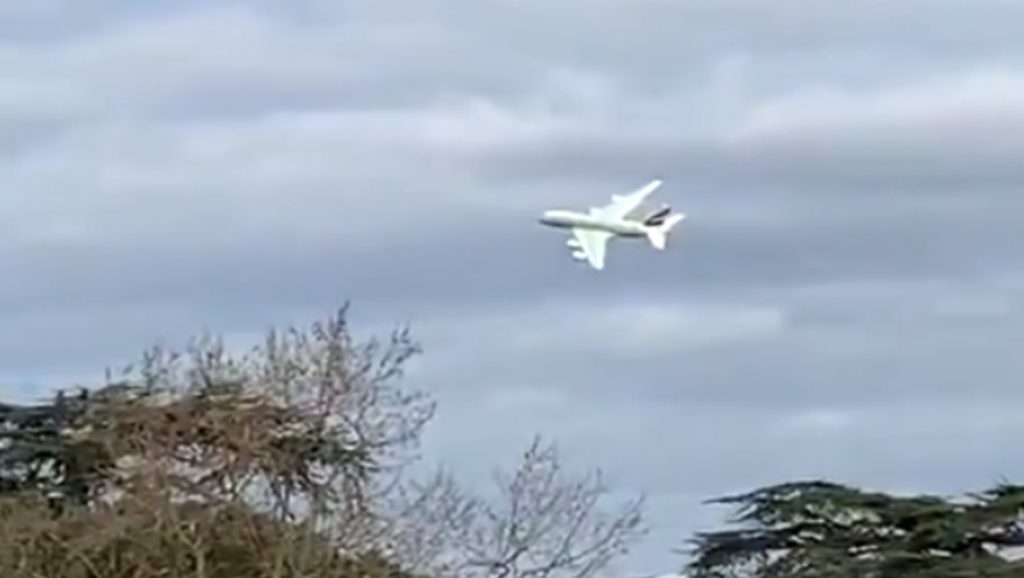
The last-ever Airbus A380 to roll off the production line has completed its first flight, 16 years after the model made its debut.
On March 17, MSN 272 took off from the planemaker’s Jean-Luc Lagardere plant, a purpose-built facility at Toulouse-Blagnac Airport in southern France.
Its destination on this test flight was Airbus’ manufacturing plant at Hamburg-Finkenwerder Airport in Germany. This is where the cabin will be fitted out and the aircraft painted in an Emirates livery.
Putting together an A380 is a gargantuan task, with 1,500 companies involved in manufacturing all the individual parts, from rivets to bolts, to seats and engines. Four million individual parts needed to be flown, driven, and shipped from 30 different countries.
The last convoy to the Final Assembly Line (FAL) took place in February 2020, with hundreds turning out in the French village of Levignac to see the wings, fuselage sections, and horizontal tailplane transported by a truck — just a month before the pandemic made mass gatherings impossible.
Fuselage sections came from Hamburg, Germany, and Saint-Nazaire, France; the horizontal tailplane was manufactured in Cadiz, Spain; and the vertical tail fin was also made in Hamburg.
The Airbus A380 was developed at a cost of $25 billion and, with a capacity of up to 853 passengers, it’s the largest mass-produced civil airliner in history. The superjumbo’s first delivery was to Singapore Airlines in 2007, and since then close to 250 A380s have rolled off the line in Toulouse.
It’s now two years since Airbus announced that it would be discontinuing the airplane.
MSN 272, the last @Airbus A380 built, doing a low-pass & wing wave in Toulouse on March 17 before flying to Hamburg (XFW). Video: Virgile Prodault @Virgile_prd ✈️ @jonostrower @AirlineFlyer @airlivenet @jvreymondon @AirbusPRESS @jetcitystar @AA380fanclub @AgueraMartin @emirates pic.twitter.com/zW2PJofN6I
— Aeronews (@AeronewsGlobal) March 17, 2021
“It’s a painful decision,” Airbus CEO Tom Enders said in February 2019. “We’ve invested a lot of effort, a lot of resources, and a lot of sweat into this aircraft.”
Last month, Australian Aviation reported how a Singapore Airlines A380 left Australia’s Alice Springs ‘boneyard’ to be fitted with a new cabin allowing it to eventually return to service.
The carrier, the launch customer for the double-decker, is set to retire seven of its A380 but crucially keep 12 in service.
It comes despite speculation the aircraft is nearing the end of its time in the skies, globally. Most notably, in May last year, Air France retired its entire fleet, while Airbus has already began suspending production.
The vote of confidence comes after Qantas chief executive Alan Joyce said earlier this month he believes the airline’s A380 fleet will still be profitable when the COVID crisis ends.
In an interview with Brussels-based Eurocontrol, Joyce said it was “heartbreaking” to see the aircraft stored in the Mojave Desert and insisted that curfews and expensive airport slots meant flying them will still be profitable.
Additional reporting by Airlinerwatch.com










